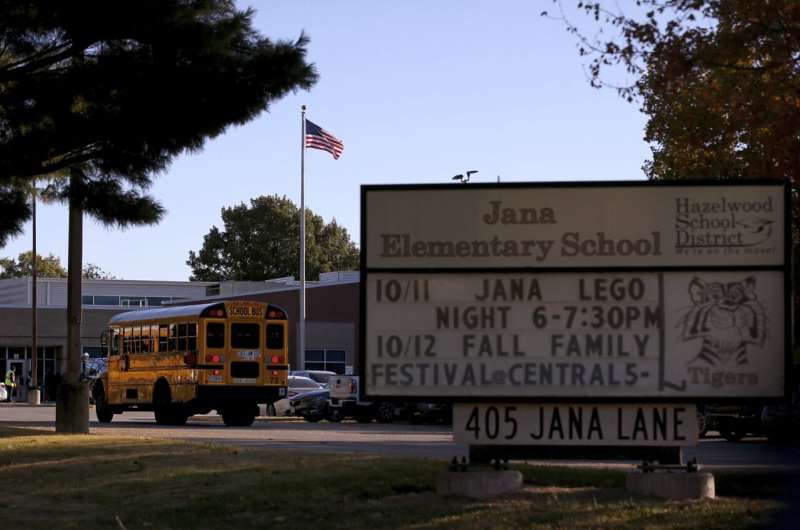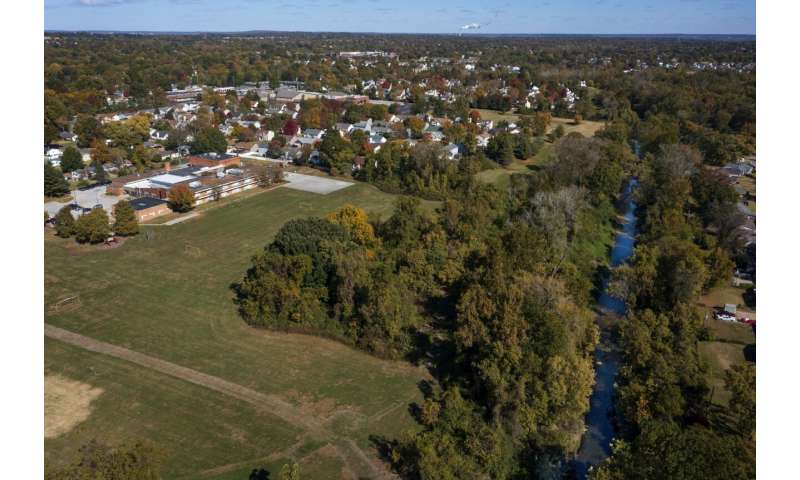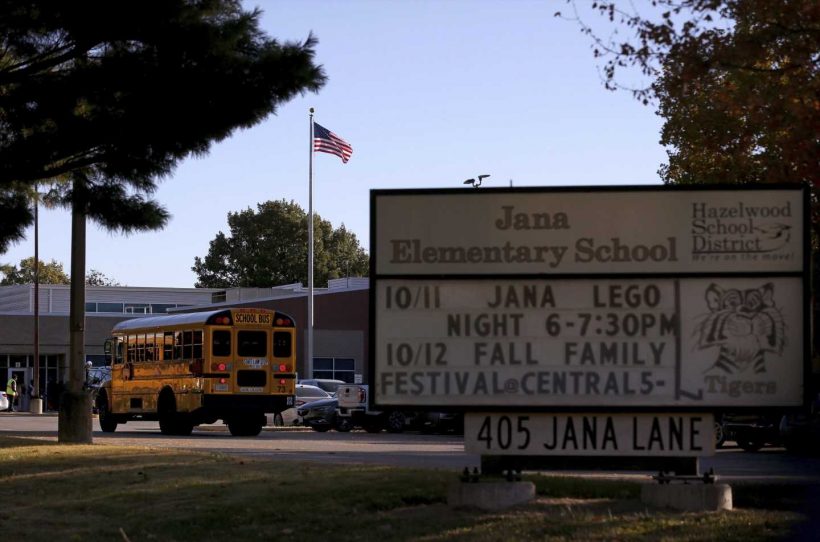
Radioactive waste in a creek that meanders through part of suburban St. Louis has long been suspected of causing rare cancers and other health problems for residents who live nearby. Now, new studies suggest Coldwater Creek also has caused contamination around—and perhaps inside—a grade school.
Students are still attending Jana Elementary School in Florissant, Missouri, despite a private company’s new report that found radioactive material far above the expected level for the school that sits within Coldwater Creek’s flood plain. The Hazelwood School Board plans to meet in closed session Tuesday night to discuss what should be done next.
Contamination was found in classrooms and the library, in the HVAC system and on the playground and nearby fields, according to a report from Boston Chemical Data Corp. The study completed earlier this month was performed on behalf of law firms involved in a class-action lawsuit—one of many seeking compensation for those who blame illness or death on living near the creek.
The Boston Chemical study cited levels of radioactive isotope lead-210 that were 22 times the expected level on the kindergarten playground. It also found high levels of polonium, radium and other material in various places throughout the school.
The U.S. Centers for Disease Control and Prevention says high levels of radiation can increase the risk of cancer, while high levels of lead can impact a child’s development and attention span.
“Remedial measures are appropriate to reduce exposures to radioactive materials for users of the school building and grounds but are complicated by the potential for recontamination due to flooding of the contaminated Coldwater Creek,” the report stated.
The private study follows an examination by the Army Corps of Engineers that found radioactive contamination in a field near the school. The Corps study did not examine the playground or the school’s interior.

“Safety is always our top priority, and we are actively discussing the implications of the finding,” a statement from the district read. “The Board of Education will be consulting with attorneys and experts in this area of testing to determine next steps.”
The school—which sits in a subdivision surrounded by homes—opened in the 1970s and has educated thousands of children, said Christen Commuso of the Missouri Coalition for the Environment. While the area along Coldwater Creek is racially mixed, about 80% of Jana Elementary School’s 400 students are Black.
“You’re talking about kids throughout the decades who have been exposed to this.” Commuso said.
Nuclear waste from World War II weapons production as part of the Manhattan Project contaminated Coldwater Creek. Mallinckrodt Chemical Co. processed uranium ore in St. Louis from 1942 to 1957 and shipped waste to a site near Lambert Airport, next to Coldwater Creek.
The contamination was over roughly half of the 19-mile-long creek that flows into the Missouri River. The Environmental Protection Agency designated the creek as a Superfund site in 1989. Remediation efforts—digging up contaminated dirt and taking it by covered rail car to a waste management facility in Idaho—aren’t expected to be complete until 2038.
In 2019, the federal Agency for Toxic Substances and Disease Registry issued a report stating that people exposed to the creek from the 1960s to the 1990s may have an increased risk of bone cancer, lung cancer and leukemia.
Dawn Chapman, co-founder of the environmental group Just Moms STL that has pushed for cleanup of Coldwater Creek, acknowledged the difficulty in connecting illnesses to contamination. But Chapman cited several former students at the grade school now battling rare cancers and other illnesses, and former teachers who have had children with life-threatening illnesses.

“Everybody’s just terrified,” Chapman said.
Phillip Moser, program manager of the Corps of Engineers’ Formerly Utilized Sites Remedial Action Program in St. Louis, told the St. Louis Post-Dispatch that the Boston Chemical report needs further evaluation.
“I already have questions about the conclusions,” Moser said.
Commuso and Chapman were alarmed by what they see as a lack of transparency by the school district. The Corps launched its study four years ago but Commuso said results only became public after she obtained the report this spring through a Freedom of Information Act request.
Even the school board was uninformed of the results, Commuso said. She presented information on the Corps report to board members in June.
Ashley Bernaugh, president of Jana Elementary’s parent-teacher association, said the organization is urging the district to immediately begin cleanup, even if it means relocating kids to another building.
Eventually, Bernaugh said, she wants her son to be back at the school.
Source: Read Full Article
